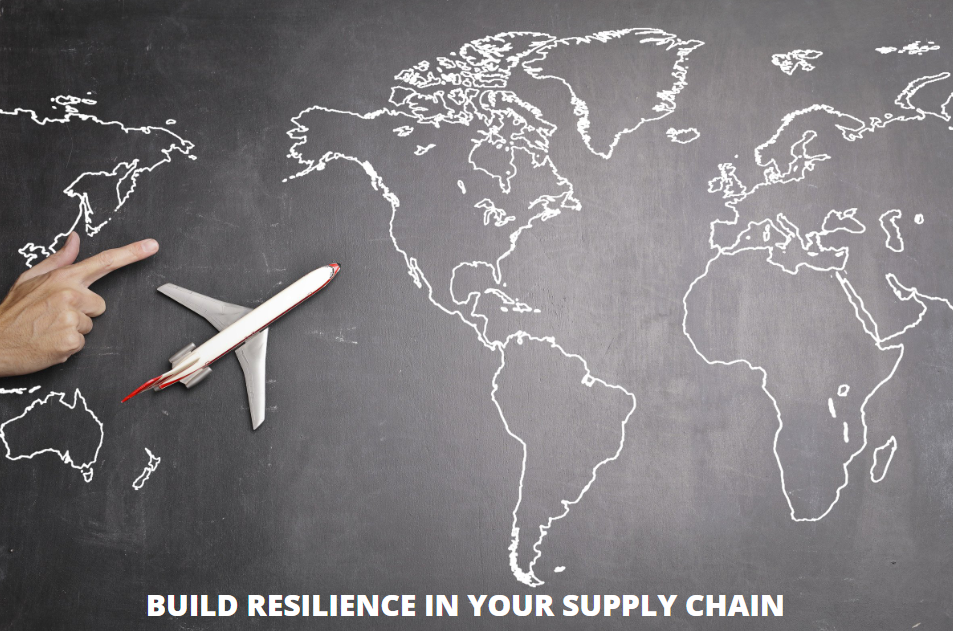In the wake of COVID-19 outbreak and other disruptions, the supply chain leaders have to balance efficiency and resilience to secure their network and minimize supply chain downtimes.
The general geopolitical trend towards nationalization, Brexit, the US-China trade war, and lately, the pandemic have changed the priorities of many supply chain frontrunners. They have to now balance operational efficiency and cost with more resilience.
Building a resilient supply chain
There is no hundred percent certain way to overcome the threats to supply chains like natural disasters, accidents, and international disruptions. The situation becomes even more complicated in case of a global pandemic or a terrorist attack. This is because the historical data does not include the use of predictive statistical tools to ensure that risks like these can be contained.
However, some organizations cope much better than others with both manifestation and prospect of indefinable risk. These organizations don’t have a common secret formula or even many of the same processes to deal with such situations, but they share an essential trait – resilience.
The concept of resilience is not new. The ability of an organization to successfully face the unforeseen has always been the essential element of success.
Achieving resilience
Supply chain resilience no longer means merely the ability to manage risks. In fact, the ability to manage risks means being better placed than the competitors to deal with it and even gain advantage from such disruptions.
Here are the three most important strategies to adopt to build resilience in your supply chain.
Diversify resources
Despite being the foremost step in alleviating risk, many organizations carry vital parts of their supply portfolios with one point of failure. Businesses need to reduce their dependence on sourcing from a single region, supplier, or country. During the Tsunami and Tohoku earthquake in 2011, the global automotive industry was crippled as the large concentration for automotive parts and accessories was manufactured in Japan. Even in the present situation, when the coronavirus first appeared in China and the ‘world’s factory’ went under lockdown, many industries and economies suffered.
There has to be a simple yet effective strategy, which should be a combination of offshore and near-shore suppliers for every component. Broadly speaking, there is a need to develop a strategy where the regional supply chains are developed that can source and distribute products within a region. Besides that, the focus should also be on building redundancy so that if one region is disrupted, other region’s suppliers can step up.
Impact is broad, getting diversified can reduce risk because if you have a concentration of suppliers at high risk of financial default, then it is sensible to qualify alternative sources with a better financial footing.
Build reserves
The typical safety-stock calculations and inventory-optimization can disregard the element of fundamental risk. With the concept of eliminating single points of failure, it is crucial to carry exigency safety-stocks, especially for low-volume parts that might impact the availability of high-value features. Broadly speaking, a business needs to develop inventory plans to ensure supplies over a long projection by taking into account possible shortages during a disruption.
During the ongoing pandemic, approximately 5 million masks and 2000 respirators were released by the US Department of Defense from its stock reserves to help fight the crisis. Most of the time, these strategic reserves go unnoticed unless there is a crisis like this. The value of building strategic reserves has become increasingly clear over the last few years. These reserves can safeguard against the ‘black swan’ events that are rare but can cause a pragmatic threat to businesses.
Besides strategic reserves, there is also a need to build strategic relationships that can make a difference in the long run. The foundation of all businesses is built on relationships with your business partners, customers, and suppliers.
Sense, foresee and respond with agility
The best supply chain teams stay ahead in the market trends for their products, customers, the latest design practices, suppliers, and emerging technology trends. They utilize the content services that help them consolidate such sources of insight to forestall risks and opportunities and promptly take proactive actions even before their competitors. For instance, monitoring leading indicators of a supplier’s financial status to anticipate the risk of default.
Furthermore, businesses need to be mindful of single sources that could be formed from the ripple effect of other risks. For instance, obsolescence or default of one source within a two-fold-sourced component will create a single-source situation that will be high-risk.
To help organizations recognize market shifts early, and take pre-emptive actions, the sourcing platforms need to track inflection points in demand, trends, cost, lead time, the financial health of the supplier, and consolidation of suppliers across various commodities.
To conclude, there will always be events that cannot be anticipated beforehand. However, the best performers build processes with upright learning cycles. The rewards for building a resilient supply chain are significant – the business will not only be able to withstand all kinds of disruptions but also increase its competitiveness.




